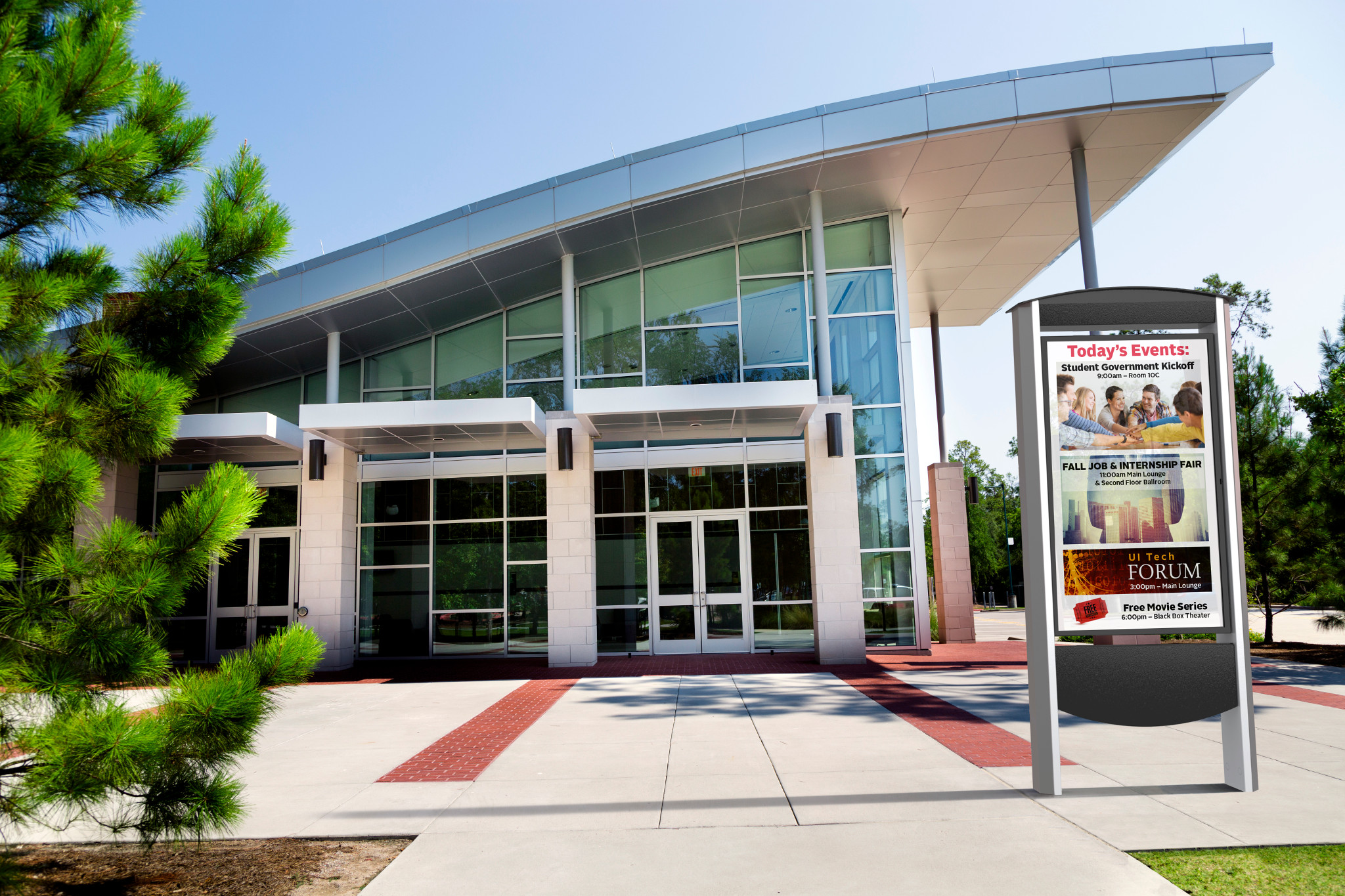
Peerless-AV’s new Smart City Kiosk has caught the attention of industry peers, winning a Best New Kiosk Award at the Digital Signage Expo in March.
The kiosk was developed to aid cities in communicating information on current or upcoming events, promotions surrounding local attractions and more. The first installation was in Hillsboro, Oregon, which deployed the kiosks primarily to offer digital directories/wayfinding. The city also wanted to share information on current events, giving visitors a feel for the city and building an identity and pride from the local community.
Brian McClimans, vice president of Sales for Americas and APAC, Peerless-AV, said that was the objective behind the creation of the kiosk.
“Peerless-AV sought to create a modern kiosk that incorporated functionality and aesthetics. It was also crucial for the kiosk to be customizable for the city/town. For example, the legs, roof, base, etc. can all be painted a different color to match the town’s colors and branding. The kiosk needed to be approachable, functional, and endure the rigors of everyday use when unattended, too,” he said.
There are also components such as environmental sensors, video sensors, and LiDAR sensors, that can be added based on the city/town’s application.
McClimans said the Smart City Kiosk provides a range of benefits for cities, end users and even installers.
“In using the Smart City Kiosk, cities and towns are able to provide live up-to-date information that can be easily changed remotely. The kiosks can also be used to enhance local safety, sharing contact information for local emergency services on the display or even incorporating a one-button call to report and alert any emergencies,” he said.
The city can also use the kiosk for data collection, aiding in managing assets and resources efficiently.

In using the Smart City Kiosk, cities and towns are able to provide live up-to-date information that can be easily changed remotely.
For end-users, when coupled with wayfinding software, the Smart City Kiosk can serve as a wayfinding solution, providing directions to local attractions, restaurants and events. It can also provide information about the surrounding area and allow users to play educational games.
“For the installer/integrator, the Smart City Kiosk provides a unique, easily recognizable, all-weather, rugged solution that is interactive, helping cities connect with residents and tourists,” McClimans said.
Getting smart
The “Smart” in Smart City Kiosk refers to the ability to add WiFi/cellular beacons to the kiosk and utilize cameras, touch interactivity, and other technologies to collect data from any citizens walking nearby, devices in the vicinity and assets. This data can then be processed and analyzed to monitor and manage a variety of community services, including traffic and transportation systems, power plants, water supply networks, waste management, law enforcement, information systems, schools, libraries and hospitals. The “Smart City” concept integrates information and communication technology, with various physical devices connected to a network (the Internet of things or IoT) to optimize the efficiency of city operations and services and connect to citizens.
“Smart City” technology also allows city officials to interact directly with both community and city infrastructure, and to monitor what is happening in the city and how the city is evolving.
Range of applicability
Most installations to date have been at street level in major cities via advertising-funded networks.
“However, we see an upward trend in more towns/cities taking control and owning these Smart City Kiosks, the way Hillsboro has done,” McClimans said.
The kiosk’s applicability extends to businesses with large campuses, universities and airports. These examples have similar needs and goals for providing time-relevant information to visitors, students and employees, he added.
Building for ruggedness
According to McClimans, outdoor applications for displays and kiosks are 10 times harder than indoor applications due to environment and human elements, which can vary day to day.
“Based on the nature of the setting, we first focus on durability and ruggedness in an unattended, 24/7 environment. In the happenstance that a part of the kiosk is damaged, it must be quick, easy and cost effective to replace. Next, we look at temperature and weather. Because the solution will be placed outdoors, we only use and recommend outdoor-rated components that can handle the large temperature fluctuations. In the event that these type of all-weather components cannot be used, we have a means to protect them. Last, we consider the ruggedness of the solution,” he said. “A government official should never want a damaged, dented, or down/unpowered kiosk seen, as it is a representation of the community.”
Cities are also selling the digital space on these kiosks to local and national businesses and brands to display advertisements and collect ad revenue, he said. This means a ‘down’ kiosk can lead to lost revenue and lost ROI.
The current and future state of kiosks
Advertising-based rollouts were the initial impetus behind city deployments, which created a global awareness for Smart City Kiosks and helped pave the way, McClimans said. However, these only work in densely-populated cities. For smaller towns across the country, the Smart City Kiosks would be best used for digital wayfinding, directories, and promotion of local town events, shops and restaurants.
“We predict this use will eventually outpace advertising-based deployments,” he said.
“The best advice that I can give to city/town planners is to work with a U.S.-based kiosk provider to determine exactly what they want in terms of a Return on Objective for the Smart City Kiosk,” McCimans said. “This will help determine the necessary technology to include, and with the flexibility provided by these kiosks, the deployments will be relevant for years to come.”






